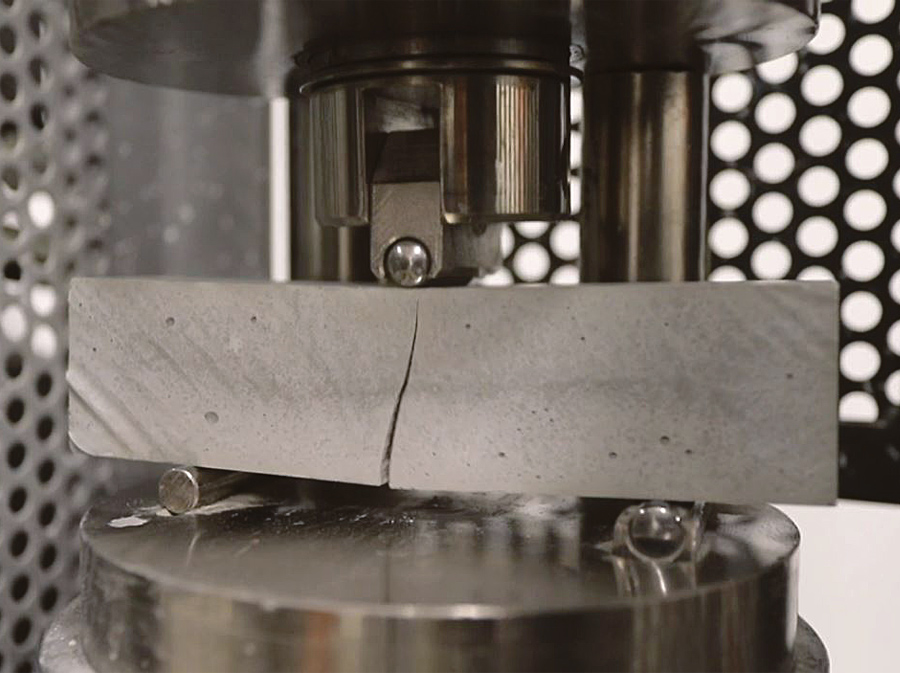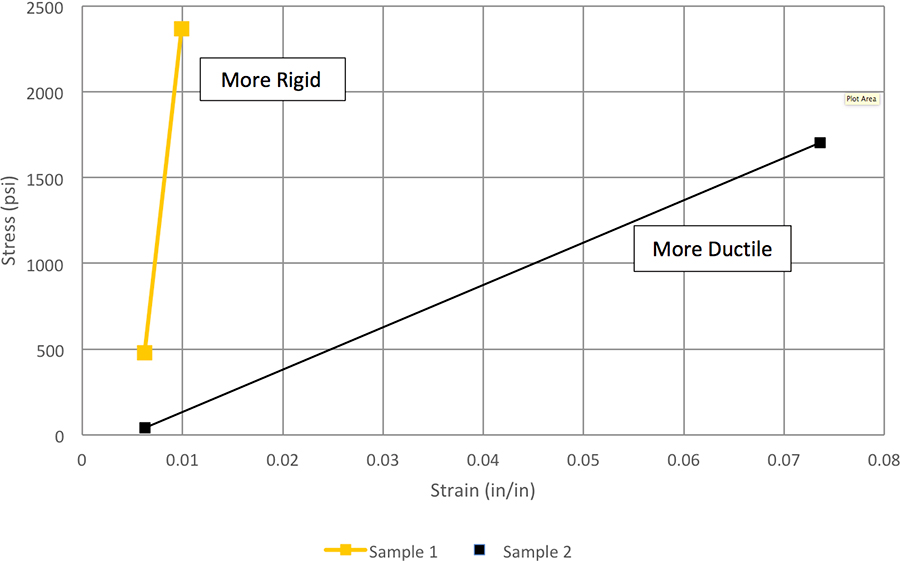
ompressive strength — the ability of a material to withstand being compressed or pushed together — is often used to determine mortar and concrete’s quality. This makes sense for floors and overlayments as the primary forces applied to them are downward, compressive loads from traffic, equipment or anything affected by the force of gravity.
However, when it comes to decorative overlayments, which are typically installed between 3/8 and 1/2 inch thick, crack resistance is also critical. When addressing cracking concerns, it’s important to understand how cracks result and how different types of strength can contribute to crack resistance and durability.
In overlay mortars, compressive strength is tested by ASTM C109 – Standard Test Method for Compressive Strength of Hydraulic Cement Mortars. The test essentially measures how much force can be applied to a cube with a 4-square-inch surface area before the cube breaks. This allows the user to calculate the pounds per square inch (psi) of the mortar.
Usually, standard concrete is between 3,000 and 5,000 psi. According to the International Polished Concrete Institute (IPCI), the preferred concrete mix design has a minimum compressive strength of 3,500 psi. A polished overlay should meet or exceed the concrete substrate’s compressive strength. However, an overlayment’s tensile and flexural strength should also be considered.
Flexural strength — the ability to withstand flexing or deflection when a load is applied — is measured by ASTM C348 – Standard Test Method for Flexural Strength of Hydraulic-Cement Mortars.
ASTM C348 is a three-point bending test where the specimen fails on the side opposite to the side where force is being applied. The side that fails is stressed in tension, so flexural strength can really be considered another measurement of tensile strength.
Concrete and other cementitious products traditionally have very high compressive strength and much lower tensile strength. The rule of thumb is that portland cement concrete has a tensile strength that’s about 10% of the compressive strength, but that percentage varies based on the mix design. Producers can adjust the strength by varying the doses of chemical additives in the mix.
There are many reasons cementitious, polishable overlayments may crack — such as drying shrinkage, plastic shrinkage, substrate movement or flexing, and reflective cracking from existing joints or cracks. Ultimately, a surface crack is caused when the forces of tension within the material exceed the material’s ability to resist that force, i.e., tensile strength. A crack relieves the tensile stress in the overlay.
In mortar and concrete, MOE is measured by ASTM C469 – Standard Test Method for Static Modulus of Elasticity and Poisson’s Ratio of Concrete in Compression. In this test, a cage is mounted to a cylinder that measures how much the cylinder is deformed due to an applied load. The strain is the change in length divided by the total length of the cylinder.
Figure 1 shows stress versus strain curves for different self-leveling overlayments. Since the MOE is a ratio of stress over strain, the slope of each line is the MOE. The yellow line has a very steep slope, indicating high MOE and a very rigid mortar, while the black line represents a mortar that’s more flexible and is more likely to bend slightly before breaking.

Long-term durability and toughness can’t be predicted by compressive strength alone. Evaluating compressive, tensile and flexural strengths together provides a more comprehensive analysis of overall performance. This holistic approach will help architects and specifiers meet and exceed performance and aesthetic expectations in polished overlay designs.